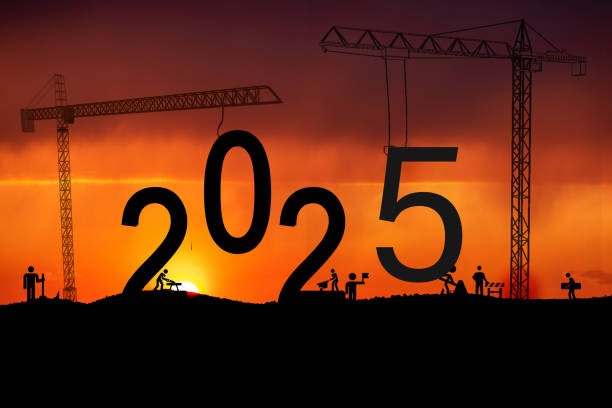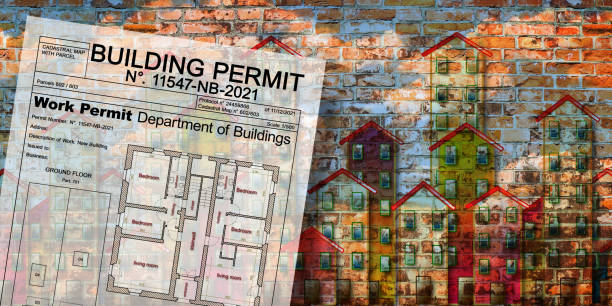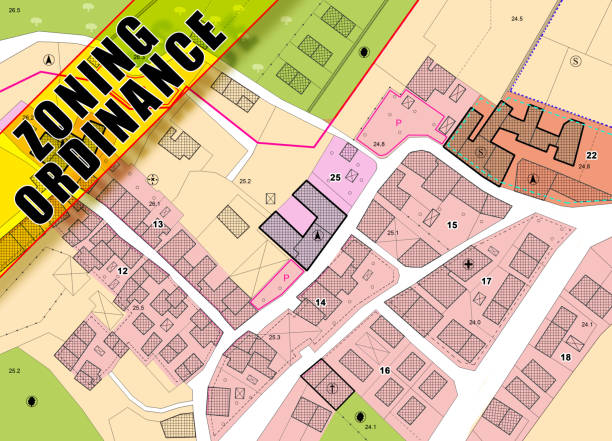Getting a building permit in Los Angeles can test anyone’s patience. Whether you’re remodeling your kitchen, building an ADU, or developing a new multifamily project, the process often takes longer than expected.
Table of Contents
ToggleThe truth is, there’s no single answer to how long a permit takes. It depends on your project size, the completeness of your plans, and how many departments need to review them.
For some, approval may take a few days. For others, especially large or complex builds, it can stretch into many months. The good news is that once you understand how the system works — and what slows it down — you can plan better and avoid costly delays.
This guide breaks it all down. You’ll learn the typical timelines, key review stages, and smart ways to move faster through Los Angeles’ building permit process.
⏱ Average Building Permit Timeline in Los Angeles
Every project moves differently. Here's what most property owners experience:
Minor Remodel | ADU Project | New Construction | Commercial Space
*Data: LADBS 2025 Review Metrics & JDJ Consulting Client Insights
Quick Answer: Typical LA Permit Timelines at a Glance
Here’s a quick overview before we get into the details.
Different project types have very different review paths, and each comes with its own average timeline.
| Type of Project | Typical Timeframe | Notes |
| Simple electrical, plumbing, or mechanical permits | 1–7 business days | Often issued same day if submitted online and no plan check needed |
| Small residential remodels or repairs | 2–6 weeks | Depends on plan completeness and any zoning issues |
| Accessory Dwelling Units (ADUs) | 6–12+ weeks | May involve multiple departments for zoning and utilities |
| New single-family homes | 3–6 months | Structural, zoning, fire, and utility reviews required |
| Commercial or multifamily developments | 6–12+ months | Subject to plan check rounds, CEQA, and possible public hearings |
Keep in mind, these are average ranges. Some projects move faster if your plans are clean, but any missing document or conflicting detail can push your project to the bottom of the review queue.
Factors That Influence Permit Time
Several things affect how quickly your permit gets approved:
- Project type and size – Larger projects need more reviews.
- Plan completeness – Missing forms or errors cause delays.
- Zoning or land constraints – Hillside, fire, or coastal zones take longer.
- Department workload – Heavy application volume slows all reviews.
- Response time – The faster you respond to plan check corrections, the faster it moves.
If you want a realistic idea, here’s how permit types generally compare:
| Permit Category | Typical Duration | Complexity Level |
| Over-the-counter (no plan check) | 1–3 days | Simple |
| Standard residential (plan check) | 4–8 weeks | Moderate |
| ADUs or major remodels | 2–4 months | High |
| Commercial or mixed-use | 6–12+ months | Very high |
These ranges can still vary by season, city workload, and how quickly you submit corrections after each review round.
Who Reviews Permits in Los Angeles and Why That Affects Time
Many property owners think getting a permit means only one department — LADBS — reviews your plans. But in Los Angeles, several departments often have to approve your project before a permit is issued. Each one has its own checklist, staff, and timelines.
LADBS: The Core Reviewer
The Los Angeles Department of Building and Safety (LADBS) is the main reviewer. They handle plan checks, issue permits, and inspect construction once work begins.
Their review covers:
- Structural design and engineering
- Building code compliance
- Energy efficiency (Title 24)
- Accessibility and safety requirements
LADBS also coordinates your project with other departments. This coordination is helpful, but it often adds time.
If your plans are complete and you respond quickly to corrections, LADBS can approve smaller permits in a few weeks. Larger ones can take months, especially if you need multiple rounds of plan checks.
Other Departments That Add Time
Beyond LADBS, your project might require clearances from several city and regional agencies:
- Planning Department – Confirms zoning compliance, density limits, and design standards.
- Fire Department (LAFD) – Reviews access roads, fire lanes, and sprinkler systems.
- Department of Water and Power (LADWP) – Checks utility service connections and load capacity.
- Urban Forestry Division – Reviews tree removal or replacement near public rights-of-way.
- Coastal Commission (if applicable) – Reviews homes or developments near coastal zones.
Each department adds time because they operate on separate schedules. A simple “hold” from any of them can pause your LADBS review until that clearance is resolved.
When Environmental or Discretionary Reviews Are Involved
Some projects require discretionary reviews or environmental studies (CEQA). These are common for:
- Large commercial or mixed-use developments
- Projects in sensitive environmental zones
- Developments requiring zoning variances
These reviews can easily extend the process by six months or more, sometimes up to a year, depending on public hearings or environmental documentation.
If your property is in a hillside or wildfire-prone area, expect added layers of review for slope stability, drainage, and fire safety — all of which can delay permit issuance.
LA Permit Workflow Step-by-Step (What Actually Happens)

Now that we’ve covered who’s involved, let’s look at how the permit process actually unfolds. Knowing each step helps set realistic expectations and prevents unnecessary frustration.
Step 1: Pre-Application and Feasibility
Before you submit anything, it’s smart to do a pre-application review. This stage isn’t required, but it helps identify zoning issues, required reports, and site limitations early.
At this point:
- Check zoning, height limits, and floor area ratio (FAR).
- Review special zones (fire, flood, or coastal).
- Get an initial opinion from a zoning consultant or expeditor if your site is complex.
A few hours of research here can save months of redesign later.
Step 2: Preparing Your Documents
Next, you’ll need to prepare your construction plans and documentation. LADBS is strict about formatting and completeness.
Typical submission includes:
- Architectural and structural drawings
- Title 24 energy calculations
- Soils or engineering reports (if required)
- Property ownership documents
- Permit application forms
Everything must match exactly — names, addresses, parcel numbers. Even small mismatches can cause a “rejection for corrections.”
Step 3: Submitting Plans and Starting the Plan Check
Once your documents are ready, you submit them online through the LADBS ePlan system or at the public counter (for small permits). The review then begins.
During plan check:
- A plan checker reviews your drawings for code compliance.
- You’ll receive correction comments, often within a few weeks.
- You respond with revised plans.
Each round of corrections adds time. On average, most projects go through two to three rounds before final approval.
If your responses are fast and complete, you’ll move through faster. But if each round takes weeks, total review time can easily double.
📋 Building Permit Process (Step-by-Step)
Tip: JDJ Consulting coordinates every step so you don’t miss deadlines or documents.
Typical Timelines for Common Project Types (Practical Estimates)
Permit times vary widely across Los Angeles. While LADBS sets clear procedures, actual review speed often depends on your project’s complexity, location, and whether your plans are complete at the first submission.
Below are realistic timeframes for common project categories in 2025, based on industry trends and JDJ Consulting’s experience with LADBS projects.
Simple Permits (Plumbing, Electrical, or Mechanical)
For very small jobs, you might not even need a full plan check. These include:
- Minor plumbing fixes
- Electrical panel upgrades
- Small HVAC installations
Typical timeframe: 1 to 7 business days
Many of these can be approved the same day if submitted online and properly documented.
Tips to move faster:
- Apply through the LADBS online portal.
- Have your contractor’s license number and scope of work ready.
- Double-check that the valuation matches your project cost estimate.
Remodels and Home Additions (Single-Family)
If you’re expanding your home or reconfiguring rooms, you’ll need a plan check. That means your project must be reviewed by LADBS plan check engineers.
Typical timeframe: 4 to 8 weeks
This can extend to 10 weeks if corrections are needed.
Common delays come from:
- Incomplete structural drawings
- Conflicting details between architectural and mechanical sheets
- Missing energy compliance forms
Pro tip: Respond to plan corrections within 48 hours whenever possible. It keeps your file active and avoids getting pushed down the queue.
Accessory Dwelling Units (ADUs)
Los Angeles strongly supports ADUs, but the review process can still be lengthy. Every ADU project goes through zoning, structural, and fire review.
Typical timeframe: 6 to 12+ weeks
LADBS prioritizes ADUs, but any zoning conflict or parking issue can add several weeks.
Factors that affect ADU approval:
- Site slopes or hillside restrictions
- Proximity to fire-prone zones
- Utility connection requirements
- Architectural design that doesn’t meet zoning code
Fast-track option: Some pre-approved ADU plans can shorten review time, but they still need site-specific verification.
New Homes and Commercial Developments
This category involves the most extensive plan reviews. You’ll likely have multiple departments checking your plans at once.
Typical timeframe: 3 to 9+ months
It can stretch beyond a year if your project triggers CEQA, design review, or community hearings.
Expect reviews from:
- Building and Safety (LADBS)
- Planning and Zoning
- Fire Department (LAFD)
- Water and Power (LADWP)
- Public Works and Sanitation
If you’re planning a mixed-use or multifamily project, professional coordination is essential. This is where hiring a permit expeditor or consulting firm like JDJ can save you months of back-and-forth.
Emergency Rebuilds and Fire-Damaged Properties
After wildfire or storm damage, Los Angeles offers expedited rebuilding programs. Still, these projects can take longer than advertised because multiple agencies review the site conditions before rebuilding begins.
Typical timeframe: 8 to 16 weeks
Delays usually happen due to:
- Fire hazard and safety evaluations
- Updated code compliance requirements
- Utility and infrastructure inspections
Even under “fast-track” programs, you should expect some waiting time for clearances and approvals.
🤔 Quick Quiz: How Ready Is Your Project for Permitting?
LA-Specific Fast Lanes and Plan-Check Options You Should Know
Not every project must wait in the standard queue. LADBS offers a few specialized plan-check options that can reduce waiting time — if your project qualifies.
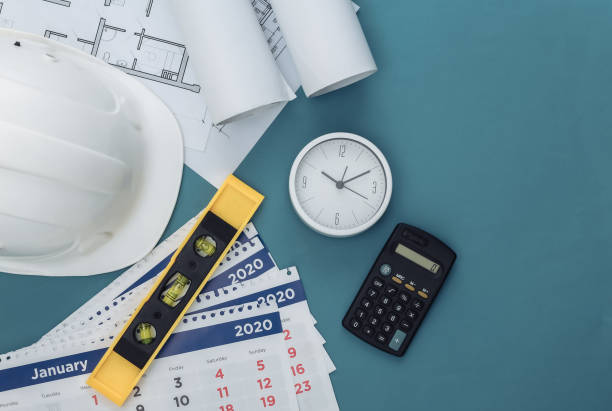
1. Counter Plan Check (CPC)
This service is available for simple projects that can be reviewed on the spot.
Best for:
- Small tenant improvements
- Minor remodels
- Non-structural changes
If your plans are complete and code-compliant, you can often get approval within one visit. It’s the quickest option — but it’s limited to smaller scopes.
2. Expanded Counter Plan Check (ECPC)
For slightly larger projects that don’t qualify for CPC, the Expanded Counter Plan Check offers a middle ground.
Best for:
- Small additions
- Light commercial tenant improvements
- Residential remodels with minor structural work
Average timeframe: 2 to 4 weeks
You’ll meet directly with plan check engineers during assigned appointments, making it faster and more interactive.
3. Express Permit Program
The Express Permit system is designed for very straightforward projects. It’s all online through the LADBS portal, no in-person visit required.
Common uses include:
- HVAC unit replacements
- Re-roofing
- Window or door replacements
If you qualify, your permit can be approved same day or within 72 hours. Just make sure your contractor uploads all required documents and has current insurance on file.
4. Parallel Design-Construction Review
For large developments, LADBS may allow parallel plan checking, meaning your contractor can start early construction (such as grading or foundations) while plan checks continue for later phases.
This option helps major builders save weeks or even months, but it’s tightly controlled and must meet safety requirements.
5. Private Expediting Services
Private expeditors coordinate submittals, track status updates, and manage resubmittals for you. They often have direct communication with plan checkers, which helps resolve issues quickly.
A professional consultant like JDJ Consulting Group ensures:
- Plans are complete before submission
- All department clearances are tracked and documented
- Responses to corrections are properly formatted
Many clients use expeditors not only for speed, but for peace of mind. It’s one of the most practical ways to keep your project moving without missing key steps.
Top 10 Reasons LA Permits Get Delayed (and How to Avoid Each)
Even with good intentions, many permit applications stall due to small, avoidable issues. Below are the most common causes — and what you can do to prevent them.
| Cause of Delay | How to Avoid It |
| 1. Incomplete applications | Review LADBS checklist before submission. Double-check all forms. |
| 2. Incorrect zoning info | Confirm zoning and overlays early in design. |
| 3. Plan conflicts between sheets | Have a design professional cross-check before submittal. |
| 4. Missing structural or energy calculations | Include complete Title 24 and engineering data. |
| 5. Delayed correction responses | Respond within 48 hours whenever possible. |
| 6. Department coordination issues | Assign one person to track all clearances. |
| 7. Fire department review delays | Schedule pre-meetings for hillside or multi-unit sites. |
| 8. Urban Forestry or tree review | Submit arborist reports at the start. |
| 9. LADWP utility holds | Apply for service upgrades early. |
| 10. Owner indecision or plan changes mid-review | Freeze design before submittal. Redesigns reset the clock. |
A Few Simple Habits That Help
- Organize all documents before uploading. Name files clearly and keep versions consistent.
- Communicate promptly with your design team and LADBS reviewer.
- Schedule reminders for all submittal and correction deadlines.
Small steps like these often make the difference between a three-week delay and a smooth approval.
How Permit Expeditors (and JDJ Consulting) Actually Shorten Timelines
Even the best-prepared homeowner or developer can get stuck in Los Angeles’ permit maze. Between zoning clearances, correction rounds, and department holds, it’s easy to lose weeks waiting for updates.
That’s where permit expeditors come in. They don’t “skip the line,” but they do help keep your application moving smoothly through every step.
What a Permit Expeditor Really Does
A good expeditor works like your project’s project manager for paperwork. Here’s what they actually handle:
- Review plans for completeness before submission
- Coordinate with LADBS and other city departments
- Track correction comments and resubmittals
- Manage all clearance forms and supporting documents
- Communicate status updates to architects and contractors
At JDJ Consulting, this process is systematic. The team ensures every document is correct, formatted, and delivered to the right reviewer — the first time.
Why This Saves Time
Permit delays usually happen because of missing paperwork, slow responses, or miscommunication between departments. Expeditors reduce those bottlenecks by:
- Submitting complete packages upfront
- Following up daily with reviewers
- Preparing quick correction responses
- Organizing documents for simultaneous review
This constant follow-up can cut processing time by 20–40%, depending on project complexity.
When It Makes the Most Sense to Hire One
You don’t always need an expeditor. But they’re often worth it when:
- You’re managing a large or multifamily project
- Multiple departments (like Planning and Fire) are involved
- You can’t personally visit LADBS counters
- Your project has zoning variances or environmental reviews
Think of it this way: an expeditor doesn’t just speed things up — they prevent setbacks that might never show up on your schedule but can quietly cost you months.
Realistic Example Timelines and Sample Project Schedules
To make the process easier to picture, here are sample project timelines based on real-world LADBS experiences. These examples assume complete plans, fast correction responses, and no discretionary reviews.

Example 1: Small Bathroom Remodel (Residential)
Average total time: 2 to 4 weeks
Timeline overview:
- Day 1: Submit online permit application
- Week 1: Plan check review
- Week 2: Receive and respond to corrections
- Week 3–4: Final approval and permit issuance
If your project qualifies for the express system, this process can be completed in less than two weeks.
Example 2: ADU Conversion (Garage or Basement)
Average total time: 8 to 12 weeks
Typical steps:
- Weeks 1–2: Prepare drawings and Title 24 report
- Weeks 3–4: Submit plans to LADBS for review
- Weeks 5–6: Receive correction comments
- Weeks 7–8: Resubmit with responses
- Weeks 9–12: Final approval, pay fees, and pull permit
Common delays:
- Fire access review
- Parking or setback issues
- Energy code revisions
With an expeditor managing clearances, some ADUs get approved in under eight weeks.
Example 3: Small Commercial Tenant Improvement
Average total time: 6 to 10 weeks
Process overview:
| Stage | What Happens | Typical Duration |
| Plan Prep | Architect completes layout and code summary | 2 weeks |
| First Submittal | LADBS plan check begins | 2–3 weeks |
| Corrections | Plan checker issues comments | 1–2 weeks |
| Resubmittal & Review | Revised plans reviewed again | 1–2 weeks |
| Permit Issued | Pay fees, print permit | 1 week |
Total Estimate: 6–10 weeks (faster with pre-screened plans)
Pro tip: Request a plan check appointment during early design. It often prevents surprises later in the process.
Cost vs. Time Tradeoffs: What Speeds Things Up and What It Costs
Every property owner wants to save time, but speed usually comes with a price. Whether it’s paying for professional drawings, hiring a consultant, or using an expedited review, faster isn’t always cheaper — but it’s often less expensive than a long delay.
Typical Costs vs. Savings
Here’s a simple comparison showing how different strategies impact time and cost.
| Option | Estimated Cost Range | Average Time Saved | Worth It For |
| Do-it-yourself submission | Minimal (your time) | None | Small projects under $5,000 |
| Standard architect submission | $1,000–$3,000 | Moderate | Small remodels or ADUs |
| Permit expeditor service | $2,000–$7,000 | 20–40% time saved | Mid to large projects |
| Expedited plan check (LADBS) | Varies by valuation | 25–50% faster | Commercial or new builds |
| Parallel plan check (multi-phase) | Custom | 1–2 months saved | Large commercial developments |
When Faster Makes Financial Sense
Sometimes paying for speed is the smarter move. For example:
- Developers: Shorter permit times reduce carrying costs and interest payments.
- Homeowners: Faster approval avoids contractor scheduling conflicts.
- Investors: Shorter holding periods mean faster ROI on rental units.
A few thousand dollars spent on professional coordination often saves tens of thousands in holding costs or missed project deadlines.
Hidden Costs of Waiting
Permit delays also carry invisible costs. Each extra month can mean:
- Higher construction quotes due to inflation
- Contractor rescheduling fees
- Lost rental income or financing penalties
When you calculate the full financial picture, investing in experienced coordination — like the services JDJ Consulting provides — becomes a practical business decision, not a luxury.
After the Permit: Inspections, Certificate of Occupancy, and Closeout
Once your building permit is approved, the real work begins. Every construction project in Los Angeles goes through several inspection milestones before you can officially complete the job.
How the Inspection Process Works
LADBS inspectors verify that your construction follows the approved plans and meets local safety codes.
Typical steps include:
- Schedule your first inspection — usually foundation or framing.
- Prepare the site — ensure work is accessible and matches plan details.
- Inspector review — they’ll check compliance and note corrections.
- Final inspection — once all corrections are complete.
Each inspection must be passed before you can move to the next phase.
Common inspection types:
- Foundation and footing
- Structural framing
- Electrical and plumbing rough-ins
- Mechanical and HVAC systems
- Final inspection for occupancy approval
If you fail an inspection, you’ll need to fix issues and reschedule — but don’t panic. Most re-inspections are quick once corrections are made.
Certificate of Occupancy (C of O)
A Certificate of Occupancy (C of O) is the city’s way of saying, “Your building is officially safe to use.”
You’ll need one before renting, leasing, or living in your new or renovated space.
To get it, you’ll need:
- All final inspections approved
- All department clearances completed (Fire, Health, etc.)
- Utility connections verified
- Payment of final fees
Once all boxes are checked, LADBS issues your C of O. For most small projects, this takes about 1 to 2 weeks after final inspection.
Tip: If you’re unsure what’s left before you qualify, JDJ Consulting can help review your permit log and create a completion checklist.
💰 Estimate Your Permit Costs
Enter your project type to see an average fee range in Los Angeles:
Source: LADBS Fee Schedule 2025 & JDJ Consulting data
🚧 Top 5 Reasons Building Permits Get Delayed
- ❗ Missing or incomplete documents
- 📄 Incorrect zoning information
- 💬 Slow correction responses
- 💰 Unpaid plan check fees
- 📆 Department backlog or staff shortage
Pro Tip: JDJ Consulting’s expeditors track every step to reduce delays and keep your project moving smoothly.
Pre-Submission Checklist for Faster Permit Approvals
Before you hit “submit” on your application, review this essential checklist. It’s designed to prevent the most common reasons permits get delayed or rejected in Los Angeles.

Basic Requirements
- Full set of architectural and structural plans
- Updated property survey or site plan
- Energy compliance (Title 24) documents
- Soils report (if new foundation work)
- Proof of property ownership or authorization
Department Clearances
Make sure your plans meet the requirements of:
- Planning Department (for zoning and land use)
- Public Works (for grading or sewer connections)
- Fire Department (for access or safety)
- Building & Safety (LADBS) (for code compliance)
Digital Submittal Tips
- Use PDF format with proper layers and naming
- Combine documents in the order LADBS requests
- Check for correct page size (24×36 for plans)
- Include contact info on every sheet
Pro Tip:
Double-check your plan index. Missing sheets or incorrect scales are among the top reasons plans get returned for corrections.
Common Mistakes That Cause Major Delays
Even the best project can get stuck in review if small errors slip through. Here are a few frequent pitfalls:
- Outdated forms or code references
LADBS updates requirements regularly. Always use the current version. - Incorrect zoning information
Verify your property’s zoning before design — it affects height, setbacks, and use. - Incomplete drawings
Plans missing structural or electrical details often get flagged. - Unpaid plan check fees
Your review won’t begin until all fees are cleared. - Slow correction responses
Every week you delay resubmitting adds a week (or more) to your overall timeline.
Being proactive and accurate upfront saves significant time — and stress — later.
FAQs About How Long Does It Take to Get Building Permits in LA
How long does it take to get a building permit in Los Angeles?
Most building permits in Los Angeles take between 2 to 6 months from submission to approval.
Smaller residential remodels may get approved within weeks, while large commercial or multi-unit developments can extend to 9–12 months.
The actual timeline depends on:
- Project complexity
- Department clearances required
- Correction rounds and resubmissions
- Staffing and review backlog at LADBS
Why does the permit process take so long in Los Angeles?
The process involves several departments, including Building and Safety, Planning, Fire, and Public Works. Each must review your plans separately for code compliance.
Delays often occur due to:
- Missing or incomplete documents
- Incorrect zoning data
- High project volume at LADBS
Working with a permit expeditor can help keep your project on track and reduce wait times.
What affects the timeline for getting a building permit?
Several factors influence the approval timeline, such as:
- Type of project: Remodels vs. new construction
- Location: Fire zones, coastal zones, or hillside areas add reviews
- Plan completeness: Missing pages or errors lead to corrections
- Coordination: How quickly responses are submitted after review
The more organized your application, the faster the approval process.
Can I get an express building permit in Los Angeles?
Yes. LADBS offers “Express Permits” for minor work such as water heater replacements, re-roofing, or window changes. These can often be issued the same day online or at the permit counter.
However, structural changes, additions, or anything involving load-bearing walls will require full plan review.
What is a plan check, and how long does it take?
A plan check is the city’s detailed review of your construction drawings for code compliance. It typically takes 3 to 6 weeks for the first round. If corrections are issued, resubmittals can add another few weeks. You’ll need to address every comment before your permit is approved.
How can I speed up my building permit approval?
Here are a few proven ways to shorten your review time:
- Submit complete, well-labeled plan sets
- Respond to correction comments quickly
- Use LADBS online scheduling tools
- Hire a professional permit expeditor to coordinate reviews
- Request early consultation meetings with LADBS
Small preparation steps often save months later.
What is a permit expeditor, and do I need one?
A permit expeditor is a professional who manages the permitting process for you. They handle paperwork, coordinate department reviews, and ensure corrections are submitted quickly.
You might need one if:
- Your project involves multiple city departments
- You live out of state or can’t visit LADBS offices
- You’re developing a multifamily or commercial project
JDJ Consulting provides this service for Los Angeles clients daily.
How much does it cost to get a building permit in Los Angeles?
Costs vary depending on your project’s valuation. For example:
- Small remodels: $500 – $2,000
- ADUs or additions: $2,000 – $5,000
- New construction: $5,000 – $20,000+
Fees include plan check costs, development fees, and city surcharges. You can estimate your fees using LADBS’s online fee calculator.
How does project type affect permit time?
Different project types have very different timelines:
- Remodels: 2–4 weeks (if minor)
- ADUs: 8–12 weeks
- New homes: 3–6 months
- Commercial projects: 6–10 months
The more departments involved, the longer it usually takes. Zoning, fire, and environmental reviews can add significant time.
What are common mistakes that delay permit approval?
Some of the most frequent causes of delays include:
- Missing plan sheets or incomplete documents
- Unpaid plan check fees
- Incorrect zoning information
- Ignoring LADBS correction comments
- Submitting outdated forms
Checking your application twice before submittal can save weeks in review time.
Do I need permits for small home improvements?
Yes, in most cases. Even smaller changes, such as replacing windows, adding outlets, or building a deck, often require a permit. You may skip a permit only for purely cosmetic upgrades like:
- Painting
- Flooring
- Cabinet replacements
Always confirm with LADBS before starting any work.
Can I start construction while waiting for my permit?
No. Starting construction before your permit is issued can result in stop-work orders, fines, and even rework costs. If you need to begin early, you can request a phased permit for grading or foundation work, but this must be pre-approved by LADBS.
How do LADBS clearances work?
Many projects require additional approvals beyond Building and Safety. These may come from:
- Planning Department for zoning
- Public Works for right-of-way
- Fire Department for access
- Sanitation for sewer connections
JDJ Consulting helps coordinate all clearances simultaneously to reduce review time.
What happens after my building permit is approved?
Once your permit is issued, you can begin construction. You’ll need to schedule regular inspections through LADBS to verify compliance at each stage. After the final inspection, the city issues a Certificate of Occupancy, confirming that the space is safe and legal to use.
What if my building permit application is rejected?
A rejection doesn’t mean denial — it means corrections are needed. You’ll receive a detailed list of issues to fix. Once revised, you can resubmit your plans for review. If you’re unsure how to address the comments, a permit expeditor or designer can help prepare your response efficiently.
Are there ways to track my permit status online?
Yes. LADBS offers an Online Permit Status portal where you can:
- Check current review status
- Download correction notices
- View assigned plan checkers
- Schedule inspections
This tool helps you stay updated without visiting the office in person.
What is a Certificate of Occupancy, and how do I get one?
A Certificate of Occupancy (C of O) is issued after your project passes all final inspections. It confirms that your building meets safety and zoning standards.
To obtain it:
- Complete all required inspections
- Pay final city fees
- Submit clearance confirmations
Once approved, you can legally occupy or lease your property.
Do zoning rules affect permit approval time?
Yes. Zoning impacts height, setbacks, parking, and allowable use. If your project requires a zoning variance, discretionary review, or environmental clearance, expect extra months in review. Projects that comply fully with existing zoning typically move much faster.
How does hiring JDJ Consulting help with faster approvals?
JDJ Consulting Group works directly with LADBS, Planning, and other departments to:
- Prepare complete submittal packages
- Coordinate simultaneous reviews
- Track correction comments daily
- Reduce communication delays between agencies
Their experience with Los Angeles permit workflows consistently shortens approval times for both homeowners and developers.
What should I prepare before submitting a permit application?
Before submitting, make sure you have:
- Complete architectural and structural plans
- Title 24 energy compliance forms
- Soils or survey reports (if required)
- All clearance documents
- Payment for plan check fees
Submitting a clean, organized package is the best way to ensure a faster review.
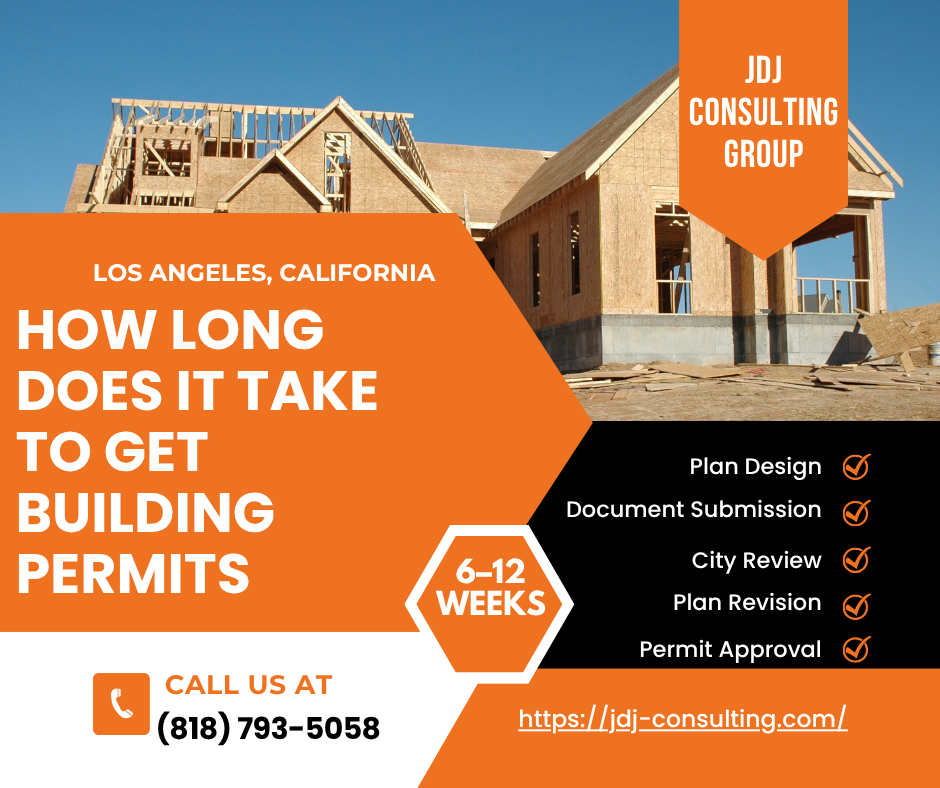
Conclusion: Getting Permits Faster Is Possible — With the Right Help
Getting a building permit in Los Angeles isn’t quick — but it doesn’t have to be painful. The key is preparation, accuracy, and persistence.
When you plan ahead, understand timelines, and keep your paperwork tight, you’ll move through LADBS much faster. And if your project involves multiple agencies or unique zoning conditions, a professional expeditor can save you weeks — sometimes months.
At JDJ Consulting Group, our team has helped hundreds of homeowners, architects, and developers secure faster building permits across Los Angeles. From first submittal to final Certificate of Occupancy, we manage every detail so you can focus on your project, not the paperwork.
References
- Los Angeles Department of Building and Safety (LADBS)
- California Building Standards Commission
- LA City Planning Department
Ready to move your project forward faster?
Let JDJ Consulting handle your next permit submission.
Contact us today for a consultation or visit jdj-consulting.com to get started. Our experts help you cut through delays, clarify requirements, and get approvals that keep your build on schedule.
- 12925 Riverside Dr Suite 302, Sherman Oaks, CA 91423, United States
- (818) 793-5058
- sales@jdj-consulting.com

